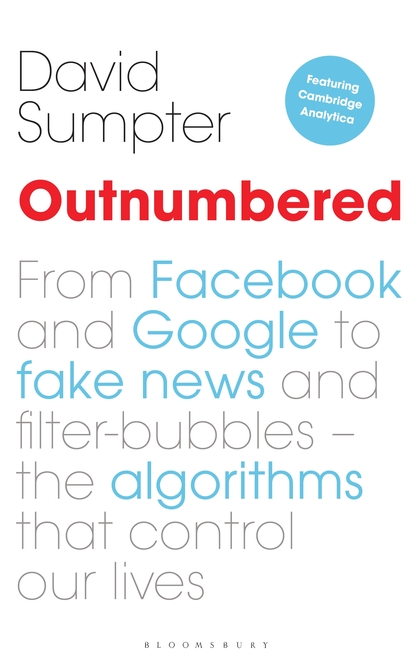Disclaimer: Thanks to the kind folks at Raincoast Books for providing me with a review copy of this mind-bender.
Description: Sumpter’s book is a fascinating look at how algorithms rule our world and where they go wrong. I’m a huge fan of Kevin Slavin’s 2011 TED Talk on this same topic. And David Sumpter, Professor of Applied Mathematics, brings readers an up-to-date look at the algorithms behind recent election polls, sports and betting (soccermatics), targeted advertising, and the filter bubbles (echo chambers) that inform our world view, whether that’s what’s of interest according to our Facebook News Feed or Netflix, or what research is noteworthy according to Google Scholar.
In each chapter, Sumpter re-creates and unpacks a different algorithm or application of technology. He interviews various key players or the people behind the technology, and poses some open-ended questions about the might or validity of the stats.
It’s math and morals. It’s a look at data and how much (or how little) we should rely on it.
Favourite Moment: The opening chapter is “Finding Banksy” and Sumpter looks at the 2016 research methods used to pinpoint the identity of Banksy based on the location of his street art. What I like about this chapter is that it’s representative of the others in the book. There’s a look at the challenge, how math and stats are applied to address the challenge, and then a look at the limitations. In this case, it’s a cool application of geo-location data and spatial statistics, but it also spoils the fun and intrigue around Banksy. The more sinister application of this is how statistical advice on the identity of criminals or terrorist may be used by police forces, or how your own movements may be tracked and stored in law-enforcement databases and used to predict your future behaviour.
Perfect Read for fans of The Filter Bubble by Eli Pariser and Weapons of Math Destruction by Cathy O’Neil. If you like science, technology, and statistics, this book is for you. Or if you are interested in the moral, legal, and ethical aspects of how these technologies are built and the ways they inform our decisions, then you’ll get a healthy dose of scepticism along with a deeper understanding of how the math and stats are applied to everyday scenarios.
- The Filter Bubble: How the New Personalized Web Is Changing What We Read and How We Think by Eli Pariser
- Weapons of Math Destruction: How Big Data Increases Inequality and Threatens Democracy by Cathy O’Neil
Published by Bloomsbury
Follow David Sumpter at http://www.david-sumpter.com/
Read the Book
